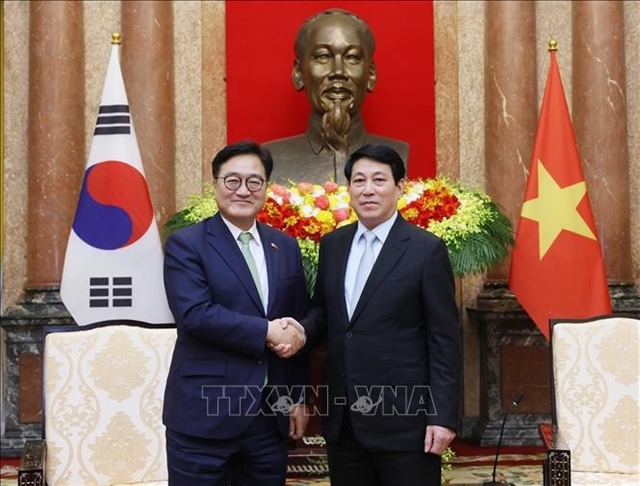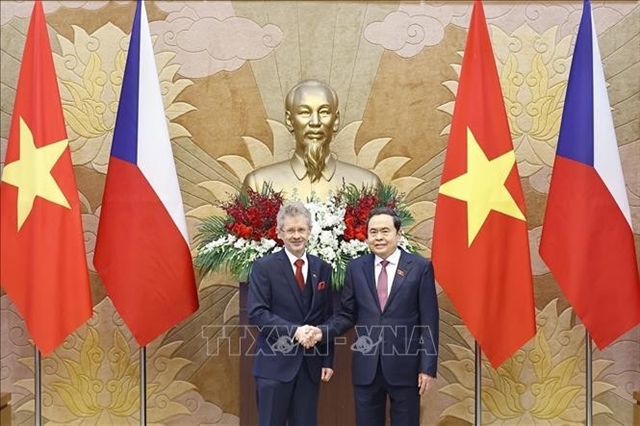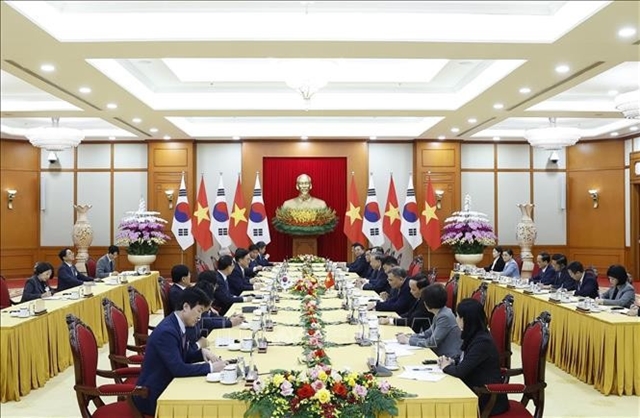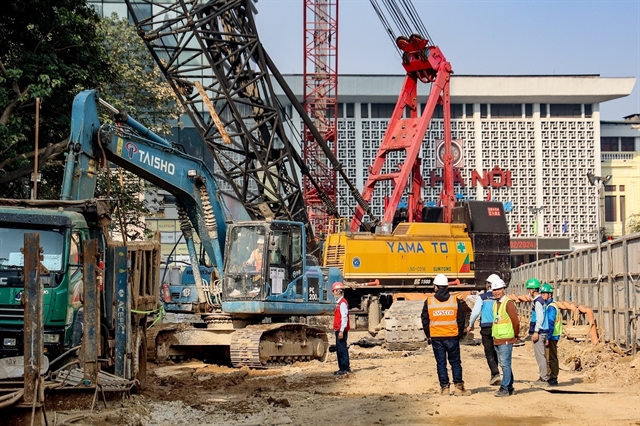 Society
Society

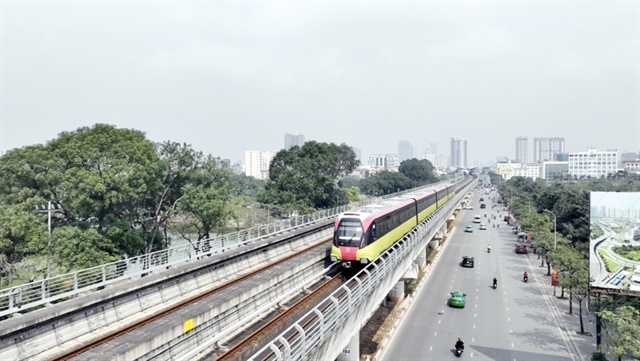 |
| Nhổn-Hà Nội Train Station Urban Railway route. VNA/VNS Photo |
HÀ NỘI – The People's Committee of Hà Nội has developed a detailed master plan with the goal of completing the urban railway network by 2035 and making it even longer by 2045.
The plan has five specific groups of solutions, including 23 policies and will be a guide to help Hà Nội overcome all the difficulties and challenges in building an at scale urban railway.
According to the director of the Hà Nội Metropolitan Railway Management Board (MRB), Nguyễn Cao Minh, the People's Committee has submitted to the People's Council for consideration and issuance of a separate resolution on implementing the master plan for investment in building the capital urban railway system.
This is considered the most detailed, specific and complete scenario to gradually realise the expectation of completing the city urban railway network, Minh said.
Under the plan for the city’s transport by 2030 and with a view through to 2050 approved by the Prime Minister in 2016, Hà Nội will build ten urban railway routes to a total length of 300km.
However, based on the actual development of the city as well as international experience, in order to improve the capacity of urban railways commensurate with the position and scale of the capital, Hà Nội plans to build an additional five routes, increasing the total lines to 15, covering more than 600km, with a target completion date of 2045, Minh said.
Phan Trường Thành, an expert on urban management, said that the idea of urban railway planning for the capital has existed since the 1990s, but a complete scenario master plan like this has never existed.
It can be said that this is the most specific and feasible guideline for the city in the process of reaching a very big goal, Thành said.
The project not only provides a list of scientifically and reasonably arranged urban railway routes, anticipating a growing urban city, but also defines a hyper-detailed roadmap, under which in phase one (by 2030) there will be 96.8km of urban rail running along three lines, with 680 carriages in operation, meeting 7-8 per cent of the projected public passenger transport needs.
Phase two, from 2030 - 2035 will complete the construction of 301km of urban railways across seven lines and put into operation 2,110 carriages, increasing the city's transport capacity to 35 – 40 per cent.
Phase three, from 2035 - 2045, will see the construction of 196.2km of the remaining routes using 1,375 carriages, completing the capital's urban railway network, he said.
Five groups of solutions proposed by Hà Nội authority for urban railways focus on planning, land recovery, compensation, support, resettlement, mobilise capital, project planning and proposal, procedures for deciding investment policies, regulations, technical standards and technology.
These groups of solutions are further specified in several policies.
The Hà Nội People's Committee will be allowed to adjust the designated use of land in the transit-oriented development (TOD) area to exploit the land fund and add value from land to develop urban railway lines and urban areas.
In the TOD area, the city can apply specific planning criteria in place of the usual general regulations for technical, social, spatial and land use.
Based on the Capital Planning, the city will set up routes and locations of urban railway projects and TOD area planning at a scale of 1 per 2000 to manage and reserve land for urban railway and TOD development.
The municipal authority decides the content, order, and procedures for preparing, appraising, and approving routes and locations of urban railways and TOD areas.
Regarding site clearance and land recovery, Hà Nội is permitted to decide on the content, order and procedures of project implementation for project appraisal and approval.
Site clearance will be carried out in two phases including installing piles to reclaim land in the depot areas, routes, stations and land acquisition for the TOD area.
The city will be allowed to appoint contractors for consulting and construction packages to relocate technical infrastructure works and for the clearance of bombs and mines.
In terms of engineering and technology, the city proposed that it can decide on technical standards and regulations as well as norms, unit prices, implementation methods and payments for urban railway projects. VNS

